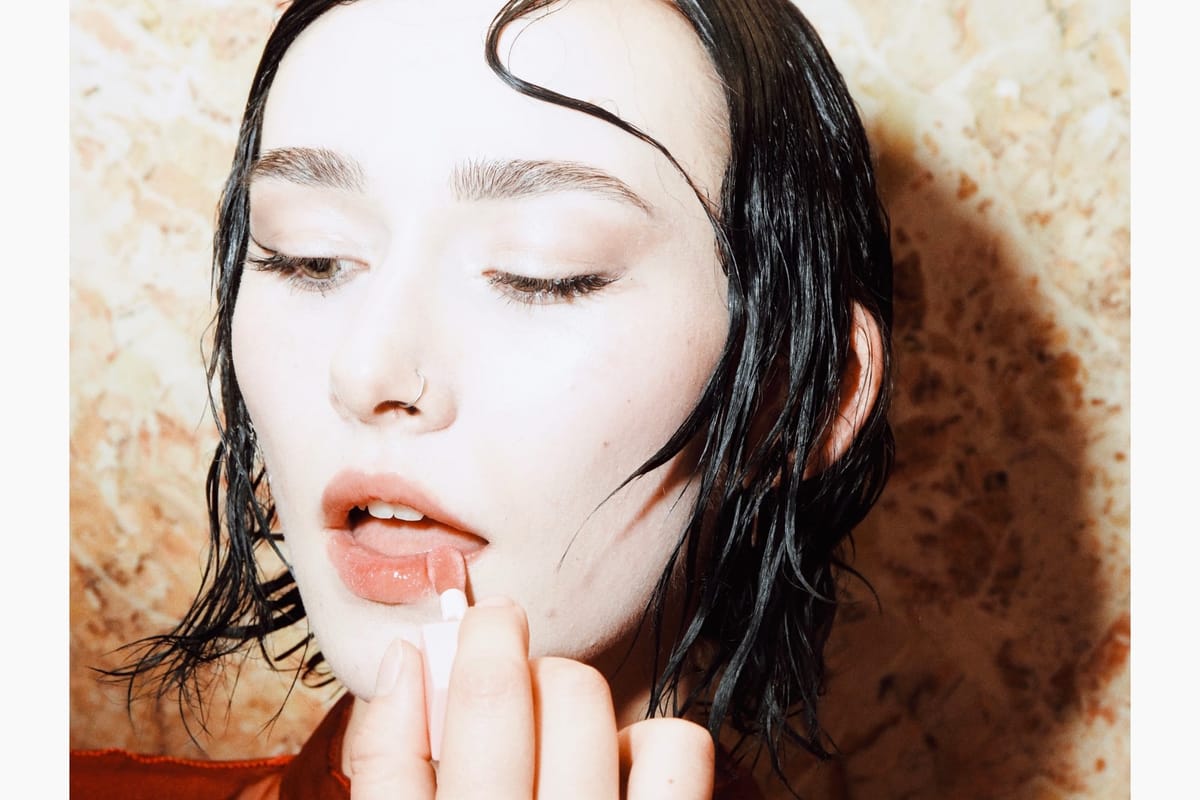
Some fashion shows are a celebration. The Oklahoma Fashion Alliance’s fourth show cycle, I Drew Myself on Fire, is a channeling; it is a conduit of rage, grief and anguish, one that transmutes raw feelings, alchemizing them into something precious and striking, something that demands change.
The OFA leadership team asked each designer to create three looks that address a systemic issue — an Oklahoma pain point — whether by examining their own personal impact or offering a critique.
Parker D. Wayne, the show’s executive producer and co-creative director, explains why fire is part of the show’s theme: “Fire is destructive, but it’s also transformative; it’s also beautiful. It brings change.”
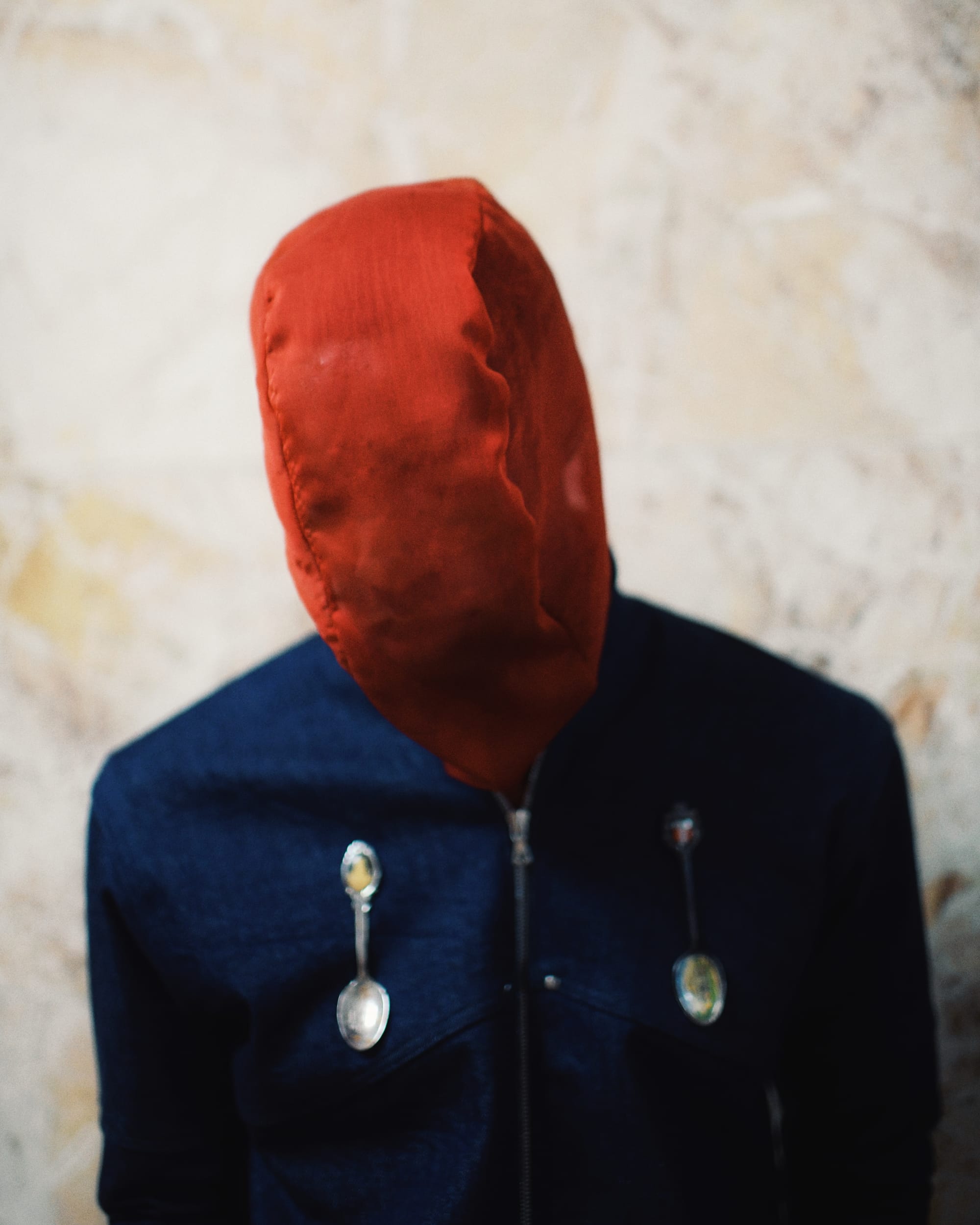
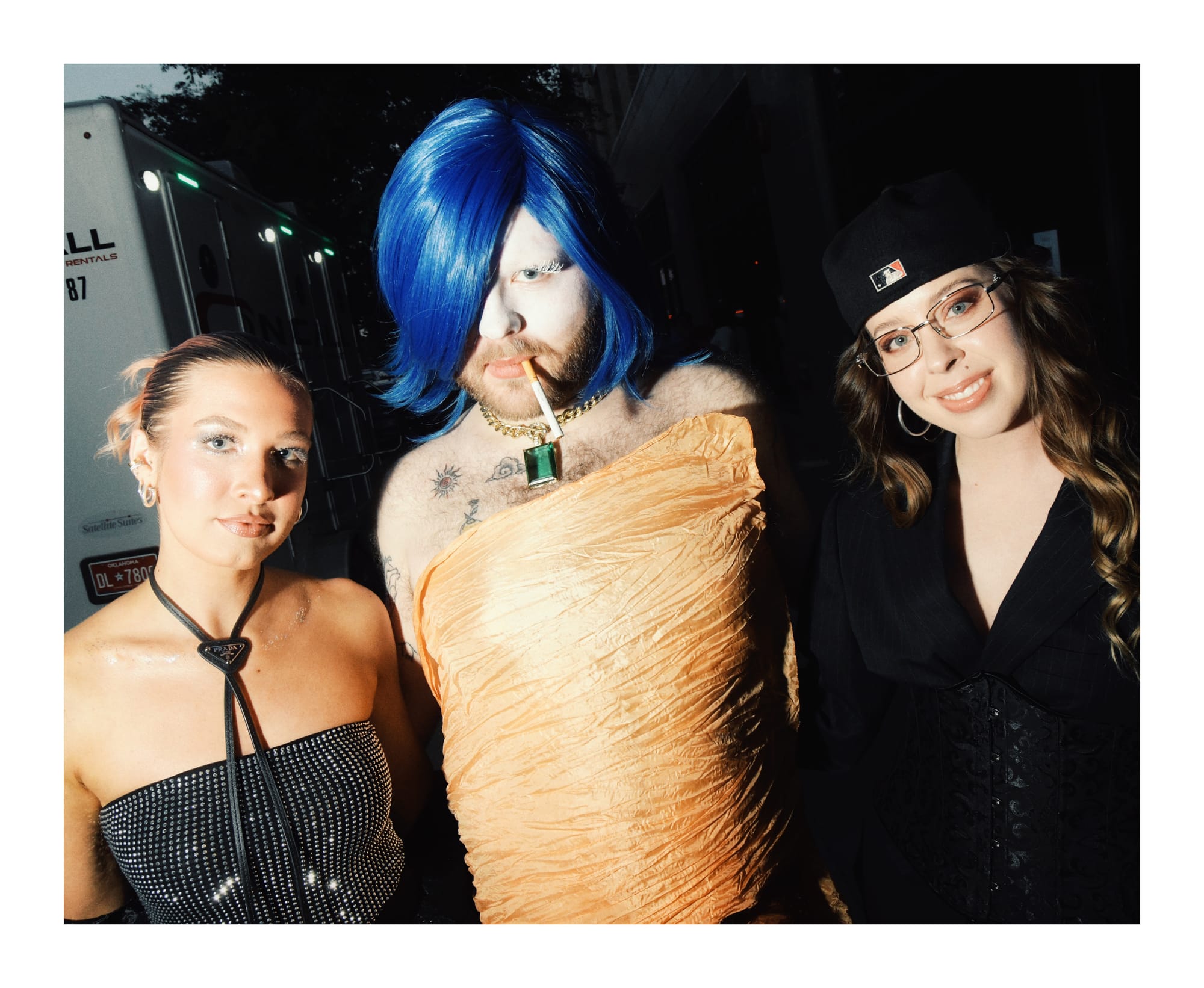
LEFT:Jordan Thomas for Designer Elyjah Monks. RIGHT: Executive Producer and co-creative director Parker D. Wayne (center) at I Drew Myself on Fire.
Anchoring the end of the runway during the show on May 16 and 17 is a tree sculpture that honors Oklahoma’s original pain: the destruction and erasure of Native peoples and their culture due to white colonization. This tree sculpture, created by artists Kilo and Zuany Shekinaa Perez, is entitled ᏥᏰᎸ ᏗᏩᏟᎶᏍᏙᏗ ᎪᏛᎢ ᎬᏗᏍᎬ ᎾᎮᎾ ᎦᏓᏪᎳᎩᏍᎪᎢ, which translates from Cherokee to English as i was using fire to draw my body fore i am always aflame.
“We’re centering the whole room around this tree sculpture. The leaves tell the stories, they have different poems and legislation that’s been passed against people, and it tells the story of the past,” explains Wayne. “But also we’re including submissions from our own team, their personal stories, their dreams, their poems, their art, even their homes.”
Even before the presentation begins in the Arco Building in downtown Tulsa, spectators are invited to be present as sound artist Warren Realrider created a soundscape using natural materials, analog mixing techniques and Christian hymns sung in Cherokee.
As the soundscape comes to a climax, a three-piece string trio begins to tune. As the trio plays the first notes of Lux Aeterna, models begin their steady and somber walks down the runway.
What followed are the works of six talented designers, each trying to shed light on a critical issue that was important to them.
Bronwen Belmont
Full-time professional drag queen Bronwen Belmont has built the looks that have graced stages, bars and clubs since 2019. Early on, she developed an artistic affinity with corsetry that has followed her to OFA’s I Drew Myself on Fire.
Her three looks “Chastity,” “Can’t Hold Back” and “Fetiche Overwhelm” all include corsetry with extensive stoning and beading on each, the third a particular standout — a hobble gown with a corset that laces from neck to hem, with arm gauntlet corsets fan-laced behind the back.
“Corsetry represents chastity, but also gives a strong dominatrix reclaiming pain,” says Bronwen. “Growing up queer and repressing my sexuality in many ways, and blossoming into my adulthood and being an entrepreneur, has really helped me to reclaim all of that trauma as a queer person.”
Citing Mugler and Schiaparelli as fashion inspirations, post-OFA Bronwen will continue to design for private clients and fellow drag performers, creating looks that will grace stages throughout the region.
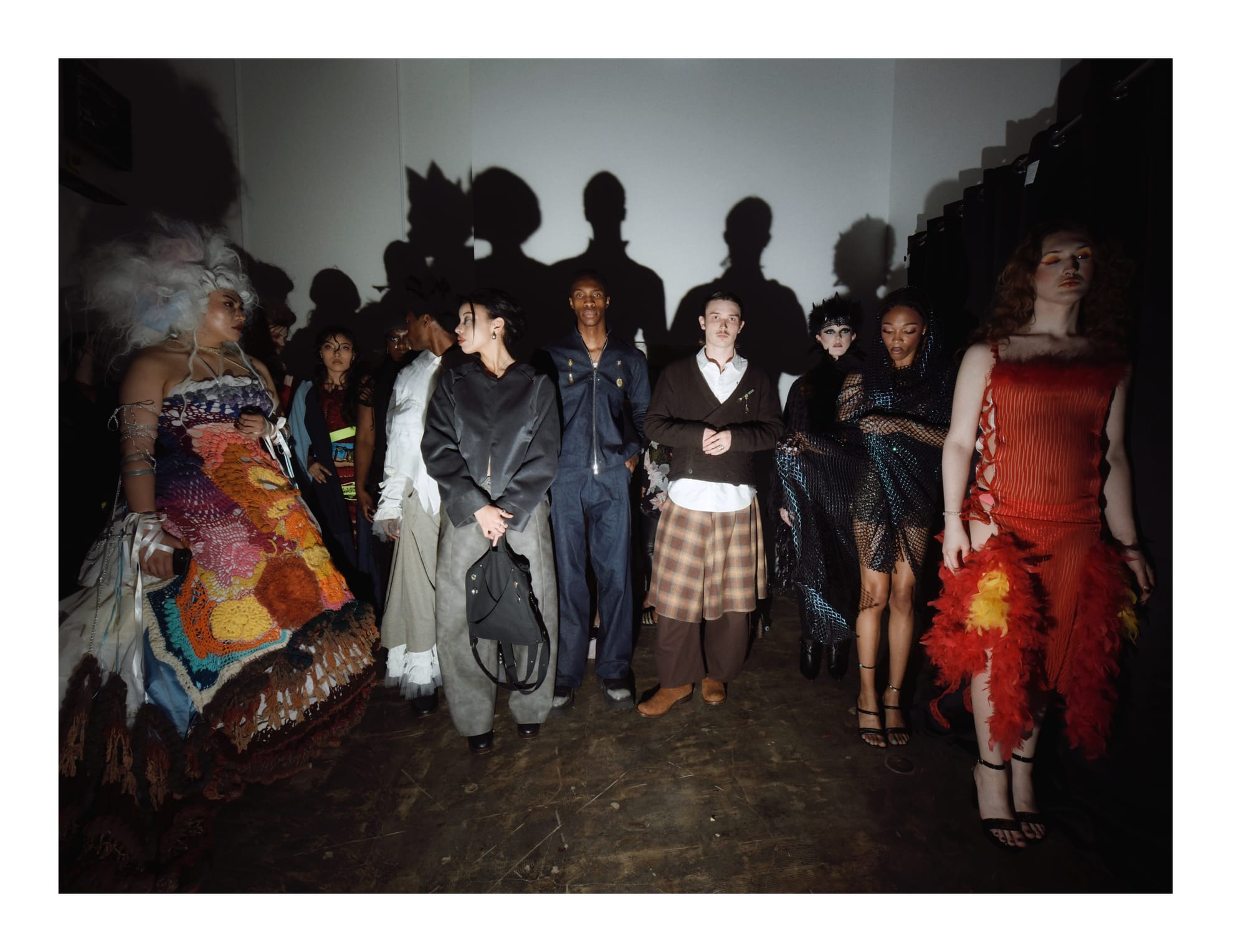
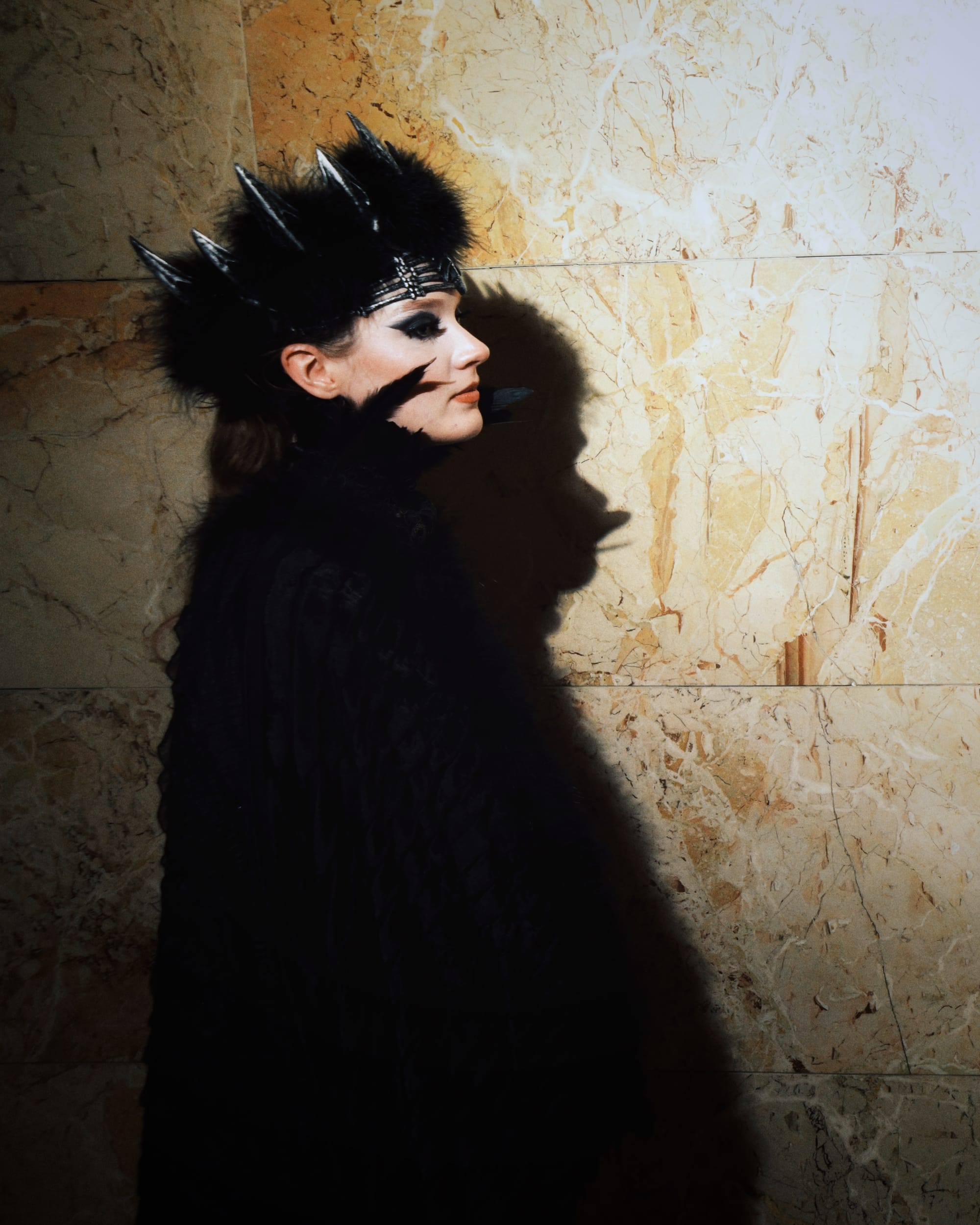
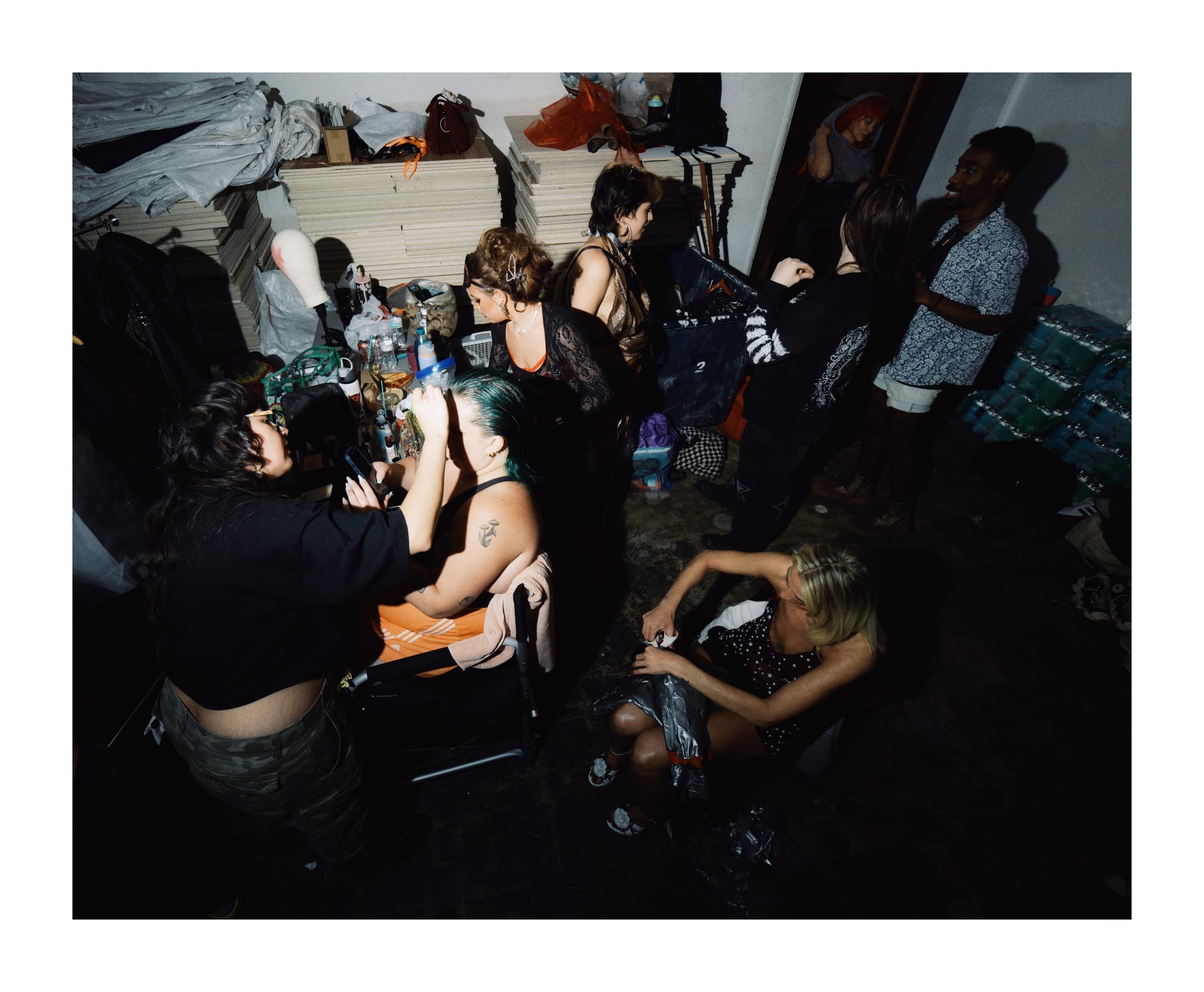
LEFT: Alexandra Soleil and Ashley Montoya for Designer Caitrin; Josiah Parks for Iman Knox; Brooklyn Bannister, Jordan Thomas, Zachary Harris for Elyjah Monks; Anna Valentine, Daphnee, and Bailey Rush for Designer Maurena Andrews. MIDDLE: Anna Valentine for Maureen Andrews
Caitrin
23-year-old Caitrin may be newer to design, but their voice is strong.
“We talked about our pain points, which is honestly the hardest part about this whole process. It’s the intersection between class violence and sexual violence in Oklahoma. And I just wanted people to see how it felt to be shown, instead of assuming a story,” says Caitrin.
Also new to fashion, model Ashley Montoya wore Caitrin’s crocheted design “The Prophecy,” which shows how women can be treated like “hanging meat,” like a cow being hung after slaughter. Caitrin points out their custom-made high heels in the second look, “Roamantics,” an evocation of the vagabond trope with a bindle, are “made out of gelatin and foraged wheat and all the brownness from dirt.”
A mix of found materials (ratchet straps, anyone?), crochet and bioplastic is interwoven into their looks. This mimics their experience as an “Oklahoma skill collector,” having worked in a variety of artistic mediums, such as music and film.
Elyjah Monks
Elyjah (Ely) Monks started a skateboarding brand as a teenager but found himself in fashion after deciding to screenprint and sew garments for the brand.
Fast forward to 2025, and it’s the sewing and shirts that stuck around, not so much the skateboarding; Monks now has an in-house label, Souvenirs, at his Tulsa fashion storefront By.EVERYONE, featured in LUXIERE 50, and these OFA looks are his fall collection.
“So, it starts with ‘The Professor’ who was wearing the oversized gym shorts, the double-breasted cardigan, and the slicked-back hair. Then we got into a student, or unfortunately, ‘The Dropout’ because of this professor. And then the final look, which is ‘The Officer,’ shows the connection between the professors and when they fail their students, what ends up happening,” says Monks.
“A big part of this is just a big middle finger to Ryan Walters,” Monks concludes.
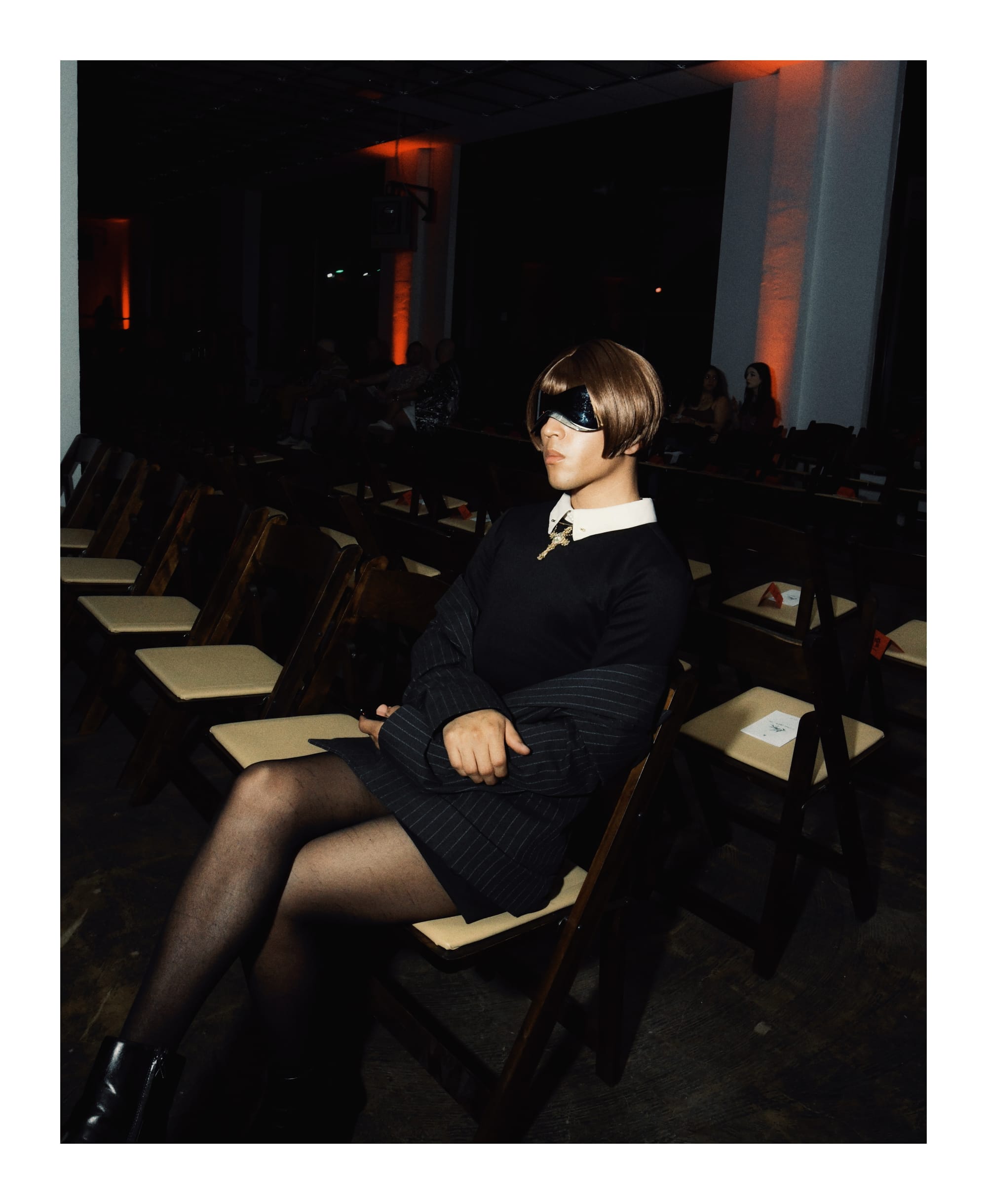
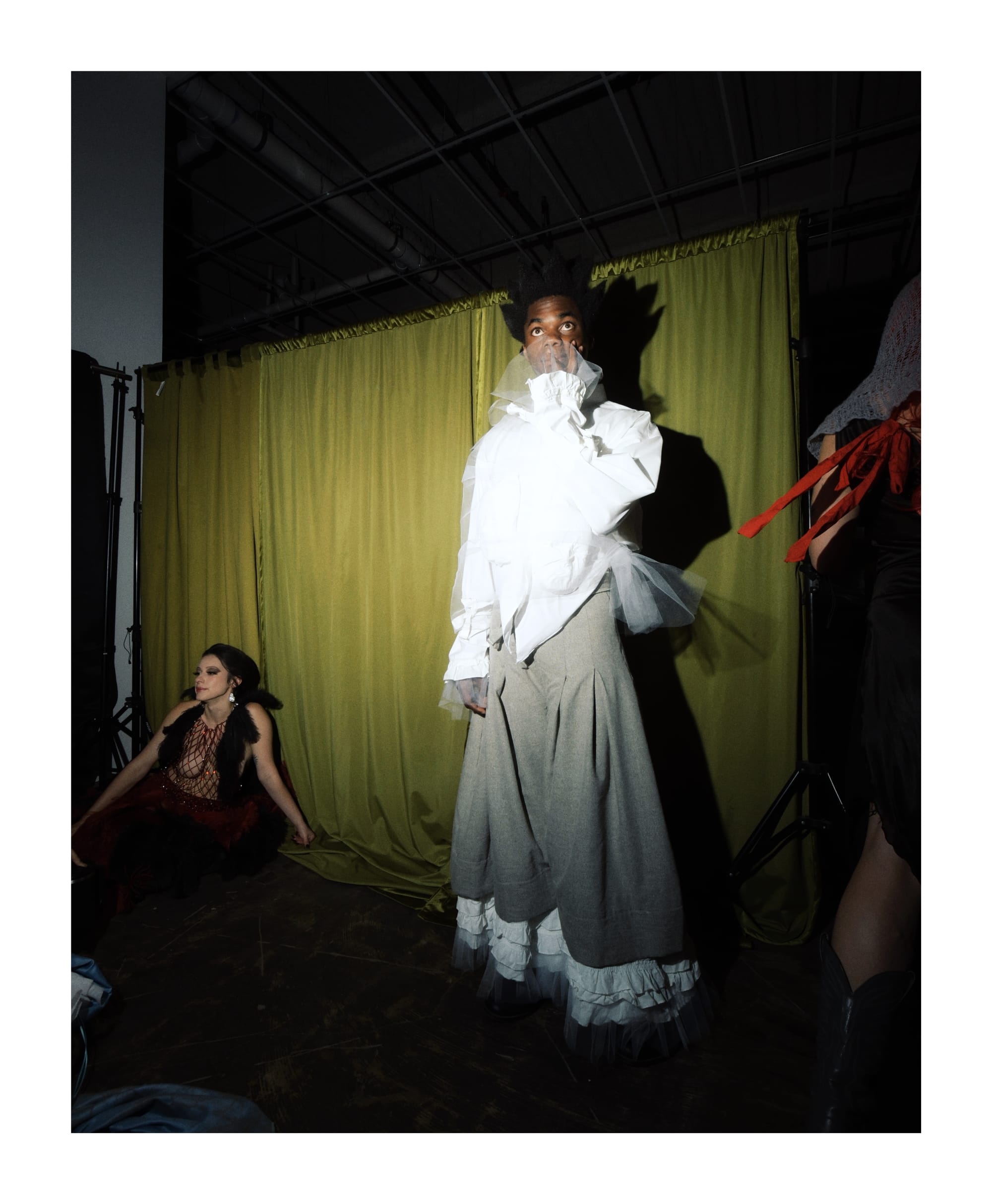
LEFT: Designer Bronwen Belmont at I Drew My Myself on Fire. RIGHT: Josiah Parks for Designer Iman Knox.
Maureena Andrews
While Maureena Andrews’ journey to fashion has been storied (she worked as a model and owned a modeling agency), her journey to I Drew Myself on Fire was much shorter — just 12 hours.
“I had 12 hours to get from finding the fabrics, creating patterns, to sewing them together, making sure they actually fit and doing the fashion show run-through. I mean, I started Wednesday, and I had to have them done by Thursday,” says Andrews.
Due to unforeseen circumstances, Andrews stepped in at the last minute to create designs for the show. Her focal point centered on Mother Nature with “The Siren,” “The Phoenix” and “The Raven” gracing the runway — a reminder of the strength, resilience and beauty of nature, with the hopeful promise that “human interaction can make a difference for good.”
“At the end, I teared up. I stood back there, and I had tears rolling down my face, because, when I woke up Monday morning, the last thing I expected to have happened by Friday night was to be part of a full-fledged fashion show,” says Andrews.
Iman Knox
Iman Knox felt “on top of the world” after her designs hit the runway at I Drew Myself on Fire, despite her designs coming from an emotionally tumultuous space.
“My whole collection was inspired by my burnout from work, from working, and finding my voice — finding who I am as a Black woman in the workplace. And how performative and exhausting that can be, wearing many faces,” says Knox, who incorporated masks and faces as a motif throughout each garment. Her first look, “Depersonalization,” had model Josiah Parks wear a mask that sat over the entirety of his face, with additional face moulds spread throughout the rest of the design.
“Look two really expressed my burnout, and really the depth of that emotion, the faces were literally burning through your body toward the end of the train. And then look three is kind of that resilience coming out of all of that, reclaiming who I am as a creative and as an artist and finding what I love to do again,” says Knox.
Having attended the Savannah College of Art and Design (SCAD) for fashion, Knox now runs her fashion brand, House of Northbrook, aiming to provide an essential Black female voice in a largely white-dominated conversation in fashion and the arts.
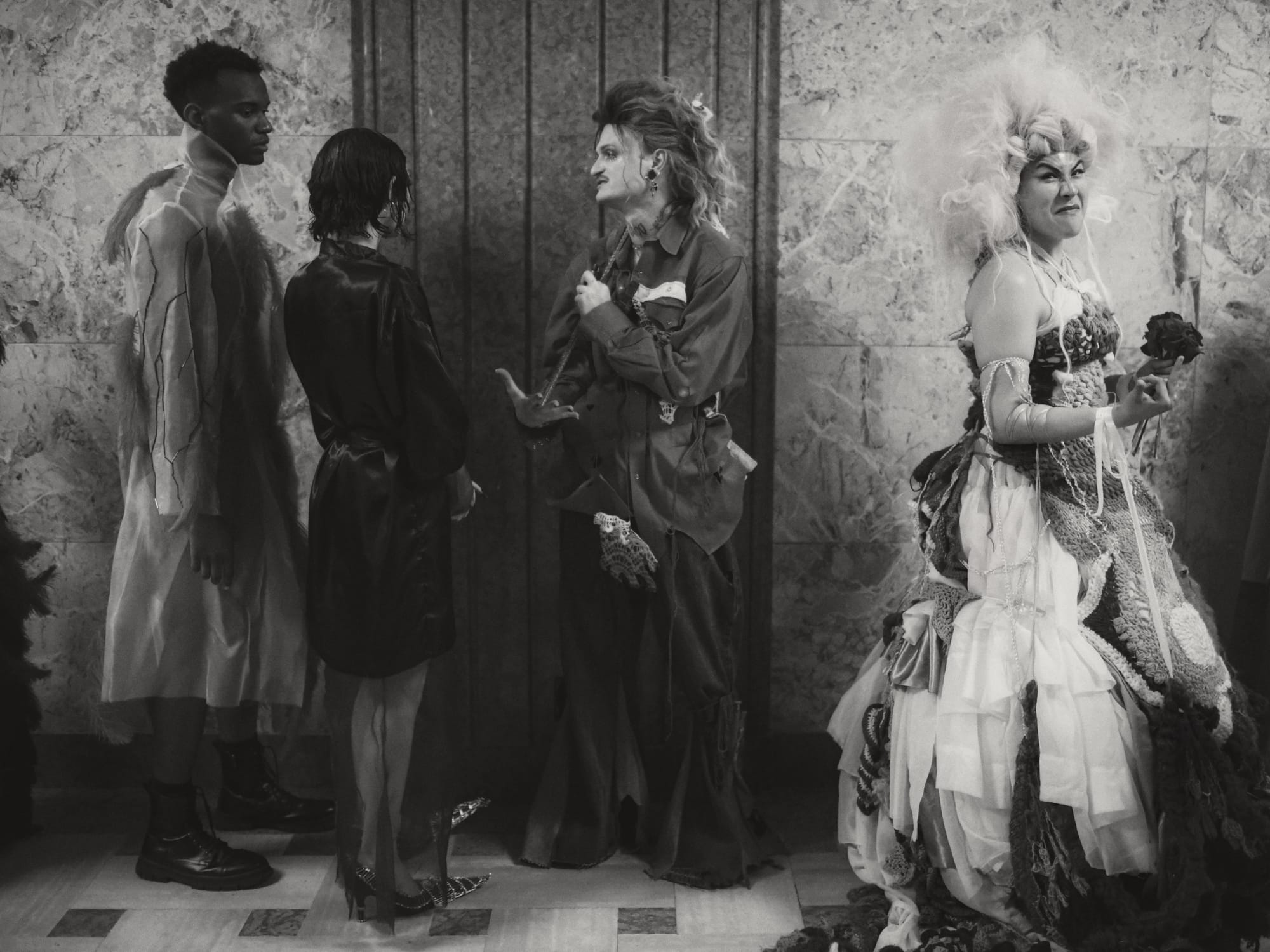
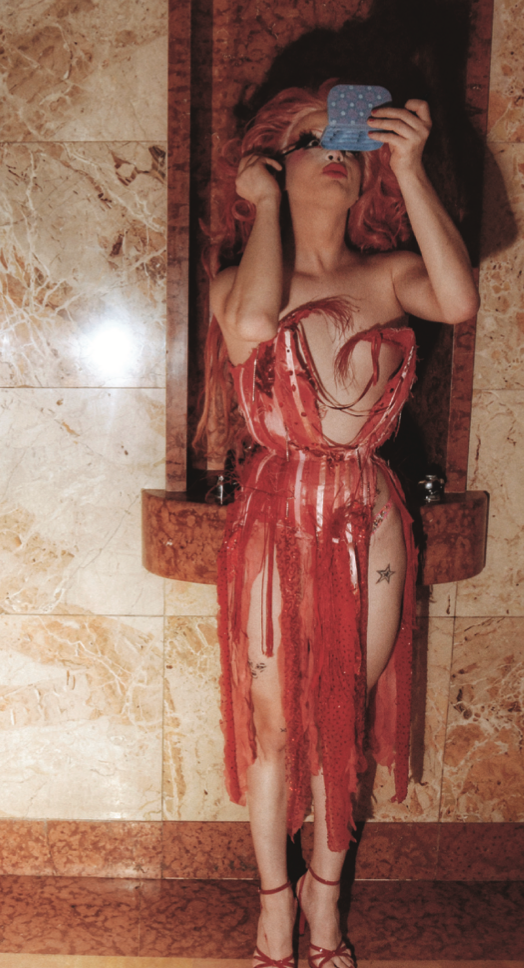
Skylar Dyer
Skylar Dyer focused on themes of abandonment, loss, and destitution in his designs for I Drew Myself on Fire.
“There’s a lot of packing up and going, leaving everything. You can’t take anything,” says Dyer, who entered Oklahoma’s foster care program as a child. “I’ve had to start over time and time again throughout my whole life, where I have to leave all my possessions and start overagain. And so that’s why I was showcasing a lot of the body, because you have to just take yourself.”
Citing Alexander McQueen, Comme des Garçons, and Maison Margiela as part of his inspirations for his fashion brand Limitless by Skylar, Dyer also drew inspiration from the story of Mata Hari, a Parisian courtesan who experienced similar familial abandonment, leading to her eventual execution.
Hand-dyed silk organza, 400 ostrich feathers, thousands of Czech glass beads, all transform Dyer’s raw experience of loss into something gauzy, floaty and beautifully undone.
From the Ashes
After the models finish their finale walk with the design team, the mood breaks with cheers and applause from the crowd, as well as smiles and hugs shared with the design team. Teardown of the space was a quick conflagration right at the show’s conclusion, due to their contract with the building, a fitting end to a show that burned bright but was finally quelled.
Wayne likened the show and OFA show cycles to a phoenix with phases of new life, death and rebirth.
“It’s the phoenix, which was also on our mood board, and that’s one of our logos that we use throughout the show,” says Wayne. “We see this as a night to bring about our own form of protest, which is tapping into our creativity, our higher selves, our community, especially. None of us could have done this show by ourselves.”
That’s a call to the audience, too — leaving something that will continue to burn in the viewer’s mind and heart even as I Drew Myself on Fire is extinguished.

